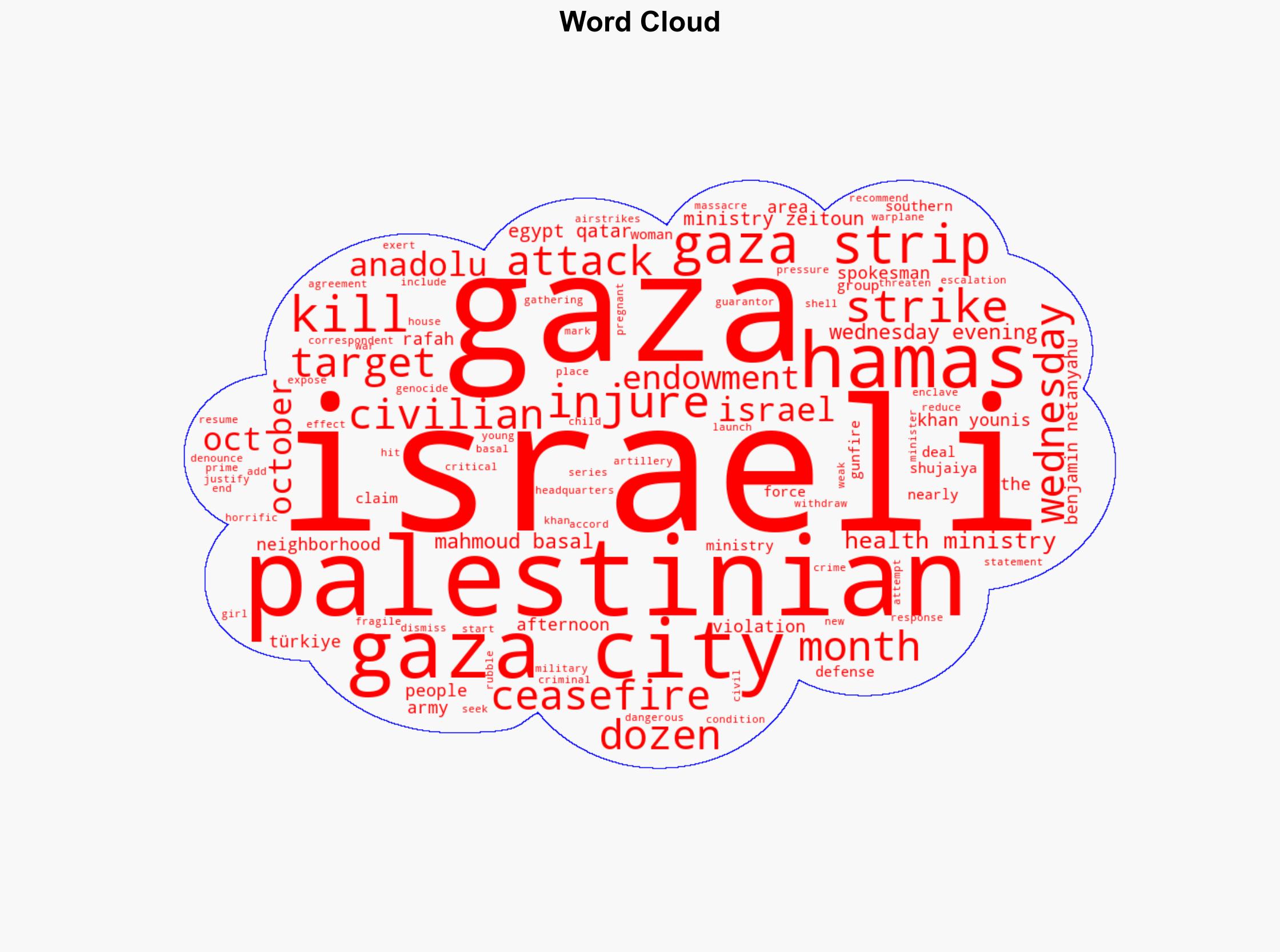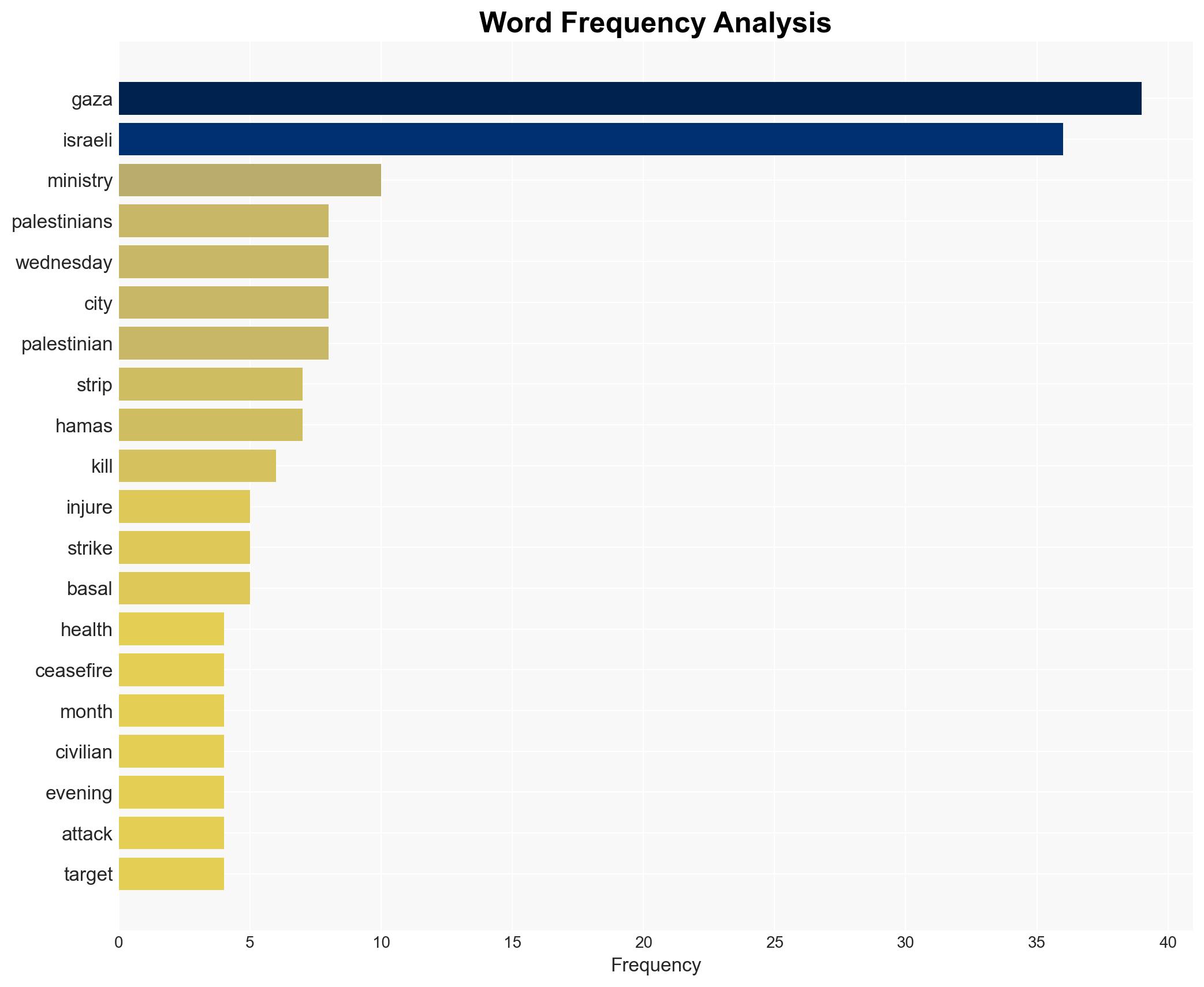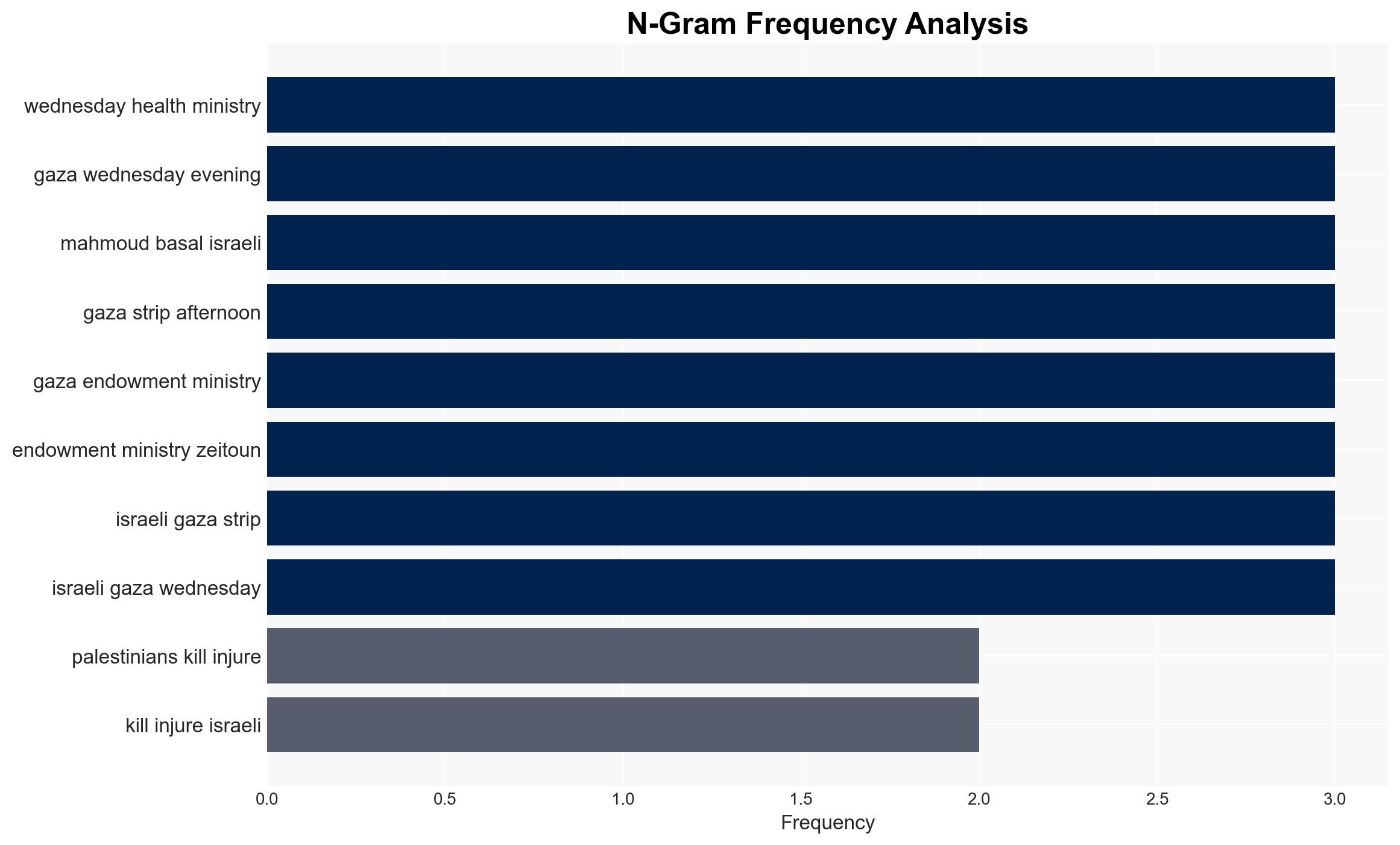25 Gazans killed in Israeli airstrikes despite ceasefire – Hurriyet Daily News
Published on: 2025-11-20
AI-powered OSINT brief from verified open sources. Automated NLP signal extraction with human verification. See our Methodology and Why WorldWideWatchers.
Intelligence Report:
1. BLUF (Bottom Line Up Front)
The strategic judgment is that the recent Israeli airstrikes in Gaza, despite a ceasefire, are likely a response to perceived threats from Palestinian factions, primarily Hamas. The most supported hypothesis is that Israel acted on intelligence indicating an imminent threat, though this action risks further destabilizing the ceasefire. Confidence level: Moderate. Recommended action: Engage in diplomatic efforts to reinforce the ceasefire and prevent further escalation.
2. Competing Hypotheses
Hypothesis 1: The Israeli airstrikes were a preemptive measure based on intelligence of an imminent threat from Hamas or other militant groups in Gaza. This hypothesis is supported by the Israeli military’s claim of responding to gunfire targeting their forces.
Hypothesis 2: The airstrikes were a strategic move by Israel to undermine the ceasefire and apply pressure on Hamas, potentially to gain leverage in ongoing negotiations or to respond to internal political pressures. This is supported by the timing of the strikes and the targeting of civilian areas, which could be interpreted as a message to Hamas.
Hypothesis 1 is more likely given the historical pattern of Israeli responses to perceived threats, but Hypothesis 2 cannot be ruled out due to the complex political dynamics in the region.
3. Key Assumptions and Red Flags
Assumptions: It is assumed that the Israeli military’s claim of responding to gunfire is accurate and that the intelligence they acted upon was credible.
Red Flags: The high civilian casualties and the targeting of non-military sites raise questions about the proportionality and intent of the strikes.
Deception Indicators: Statements from both sides may contain propaganda or exaggerations to justify actions or garner international support.
4. Implications and Strategic Risks
The continuation of airstrikes and retaliatory actions could lead to a full-scale conflict, undermining regional stability. Politically, this escalation risks alienating international partners and could lead to increased sanctions or diplomatic isolation for Israel. Economically, prolonged conflict could disrupt trade and investment in the region. Informationally, both sides are likely to engage in propaganda campaigns to shape international perception.
5. Recommendations and Outlook
- Engage with regional powers (Türkiye, Egypt, Qatar) to mediate and reinforce the ceasefire.
- Encourage transparency and independent investigations into the strikes to assess compliance with international law.
- Best-case scenario: Ceasefire holds with international mediation, reducing immediate tensions.
- Worst-case scenario: Escalation into a broader conflict involving regional actors.
- Most-likely scenario: Continued sporadic violence with intermittent ceasefire violations.
6. Key Individuals and Entities
Benjamin Netanyahu (Prime Minister of Israel), Hamas (Palestinian militant group), Israeli Defense Forces (IDF)
7. Thematic Tags
Structured Analytic Techniques Applied
- ACH 2.0: Reconstruct likely threat actor intentions via hypothesis testing and structured refutation.
- Indicators Development: Track radicalization signals and propaganda patterns to anticipate operational planning.
- Narrative Pattern Analysis: Analyze spread/adaptation of ideological narratives for recruitment/incitement signals.
Explore more:
Counter-Terrorism Briefs ·
Daily Summary ·
Support us





